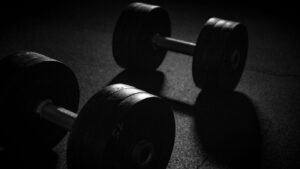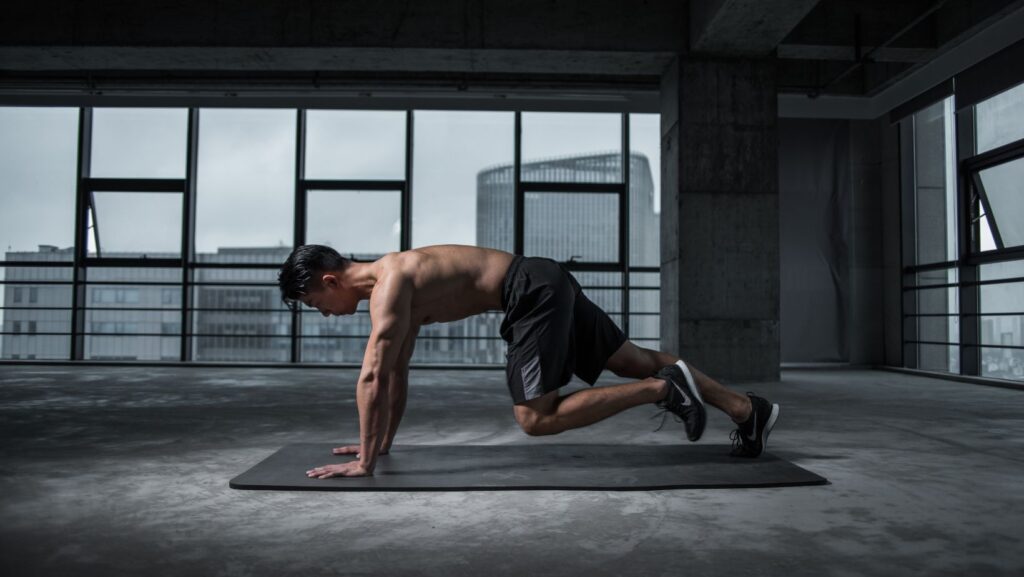Indoor skydiving is an exhilarating sport that’s gaining popularity fast. It’s a fun and safe way to experience the thrill of freefall without jumping out of an airplane. But don’t be fooled; it’s not just about floating on a wind tunnel. It requires strength, flexibility, and endurance.
If you’re planning to take the plunge into this exciting activity, you’ll need to be in top shape. This article will provide fitness tips to get you ready for the unique physical demands of indoor skydiving. From core strengthening exercises to flexibility training, we’ve got you covered.
So, strap in and prepare for a fitness journey that’ll take you to new heights. After all, indoor skydiving isn’t just a sport, it’s an adventure that begins with preparation and ends with the thrill of flight.
Fitness Tips for indoor Skydiving
 Indoor skydiving involves an adrenaline-pumped virtual freefall where participants float on a cushion of air. This sky-high adventure equates to a full-body workout, hence attracting fitness enthusiasts globally.
Indoor skydiving involves an adrenaline-pumped virtual freefall where participants float on a cushion of air. This sky-high adventure equates to a full-body workout, hence attracting fitness enthusiasts globally.
Indoor skydiving presents a popular sporting activity, simulating the sensation of freefalling from an aircraft, sans parachute. Participants get propelled up a vertical wind tunnel, courtesy of high-speed wind currents. The experience mimics actual skydiving, rendering it an excellent training ground for professional skydivers and an exhilarating sport for adventurers preferring safety on land.
Flexibility facilitates smooth maneuvering during flight, and cardiovascular endurance assists in maintaining energy levels throughout the flight’s duration. Therefore, indoor skydiving participants stand to reap significant fitness benefits, provided their endurance, strength, and flexibility components get duly addressed in preparation.
Fitness Tips for Indoor Skydiving
 The secret to mastering indoor skydiving lies in the right fitness preparation. Here’s a comprehensive guide that highlights key areas to focus on for optimal performance. Cardiovascular endurance stands as a critical element in indoor skydiving. It dictates the capacity to handle the physical demands of the activity without fatigue. Aim to optimize this aspect of fitness by incorporating aerobic exercises into workout schedules. For instance, regular running, cycling, or swimming can work wonders for cardiovascular health. Alternatively, high-intensity interval training (HIIT), consisting of short bursts of extreme activity, followed by moderate recovery phases, proves effective for optimizing cardiovascular endurance.
The secret to mastering indoor skydiving lies in the right fitness preparation. Here’s a comprehensive guide that highlights key areas to focus on for optimal performance. Cardiovascular endurance stands as a critical element in indoor skydiving. It dictates the capacity to handle the physical demands of the activity without fatigue. Aim to optimize this aspect of fitness by incorporating aerobic exercises into workout schedules. For instance, regular running, cycling, or swimming can work wonders for cardiovascular health. Alternatively, high-intensity interval training (HIIT), consisting of short bursts of extreme activity, followed by moderate recovery phases, proves effective for optimizing cardiovascular endurance.
A robust core and lower body provide stability and control in indoor skydiving. This sport involves using core muscles for body stabilization and lower body strength for maneuvering in the airflow. Undertake exercises like leg presses, squats, and lunges target the thighs and glutes, while planks, Russian twists, and ab rollouts strengthen core muscles. Furthermore, Pilates and yoga classes accentuate control, infusing balance to this body-strengthening regimen.
Specific Exercising Routines for Indoor Skydiving
 Indoor skydiving necessitates intense preparation with specific exercise routines. These routines are tailored to improve cardiovascular endurance, strength, and flexibility – all crucial for indoor skydiving. Cardiovascular fitness significantly aids indoor skydiving performance. A typical cardio exercise routine for an indoor skydiving enthusiast might include:
Indoor skydiving necessitates intense preparation with specific exercise routines. These routines are tailored to improve cardiovascular endurance, strength, and flexibility – all crucial for indoor skydiving. Cardiovascular fitness significantly aids indoor skydiving performance. A typical cardio exercise routine for an indoor skydiving enthusiast might include:
- Running: It provides a foundation for cardiovascular fitness. Incorporate interval training into runs, alternating between high-intensity sprints and low-intensity jogs.
- Cycling: It’s a great low-impact cardio exercise that also strengthens the leg muscles, offering benefits for boosting leg strength—highly beneficial in maintaining controlled movements during indoor skydiving.
- Rowing: An excellent full-body workout that develops both cardiovascular fitness and strength, particularly beneficial for core stability necessary during indoor skydiving.
Strength Training Exercises
Strength training plays a pivotal role in preparation for indoor skydiving. These workouts often include:
- Planks: An exercise that works the abs and obliques intensively, aiding in the maintenance of posture and balance during a flight.
- Pull-ups: They work the upper body, primarily the back and arms, fortifying the muscles used to guide movements within the wind tunnel.
- Squats and Deadlifts: Lower body strength exercises that enhance the power and control of lead movements in indoor skydiving.
Carbohydrates, particularly complex ones from sources like whole grains and fruits, supply the sustained energy required for indoor skydiving. On the other hand, healthy fats from foods such as avocados, nuts, and olive oil help absorb essential vitamins and insulate the body.

